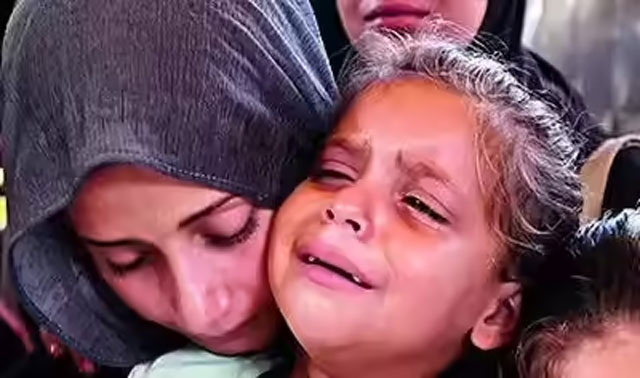Daijiworld Media Network- Gaza
Gaza, Aug 1: Soaring food prices in Gaza have reached such extreme levels that they are being described as “meaningless” by global aid officials, as chaos, violence, and limited aid distribution continue to plague the besieged enclave.
Following Israel’s overhaul of the aid distribution system in May, deadly violence has engulfed areas where humanitarian aid is being handed out. The revised system, aimed at preventing aid from falling into the hands of Hamas, has resulted in minimal aid reaching civilians. Desperate Palestinians are either avoiding these “death traps” or turning to local markets—where even basic goods now come with astronomical price tags.

“Have I ever seen this anywhere else to this extent? Absolutely not,” said Arif Husain, Chief Economist at the World Food Programme.
According to the Gaza Governorate Chamber of Commerce and Industry, food prices have skyrocketed beyond comprehension.
Sugar: $106 per kg (up from $0.89)
Flour: $12 per kg (up from $0.42)
Tomatoes: $30 per kg (up from $0.59)
Mohammad Fares, a 24-year-old Gaza City resident, said he avoids aid sites altogether, calling them zones where “Israeli soldiers shoot people” and “desperate Palestinians threaten each other with knives.”
“The prices are insane, totally insane,” Fares added.
Instability in the supply chain has triggered wild fluctuations. The cost of a 25-kg sack of flour swung from $891 on July 20 to $223 on Sunday, before rising again to $334 by Wednesday.
“We’re not just facing a war in terms of bombs—we’re facing a war in terms of prices, hunger and thirst, too,” said Ayed Abu Ramadan, Chair of the Gaza Chamber of Commerce.
Non-food essentials have also become unaffordable:
Bar of soap: $10 (was $0.59)
Pack of 40 diapers: $149 (was $8.61)
Adding to the crisis is a severe shortage of hard cash, forcing many residents to turn to the black market, where steep commissions are charged.
“Suffering is built into every aspect of life,” said Fares, capturing the sentiment of thousands trapped in a deepening humanitarian catastrophe.
As aid remains uncertain and food prices surge uncontrollably, ordinary Palestinians are left navigating not just a warzone—but an economic battlefield where survival itself comes at a staggering cost.